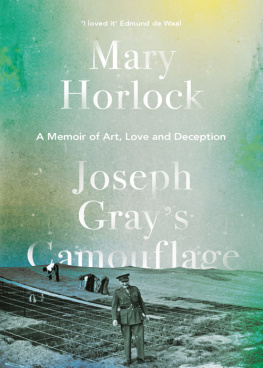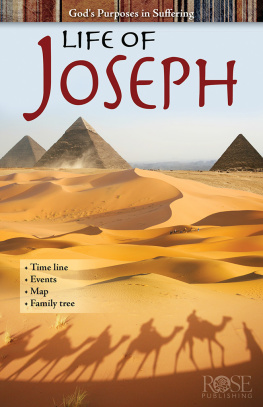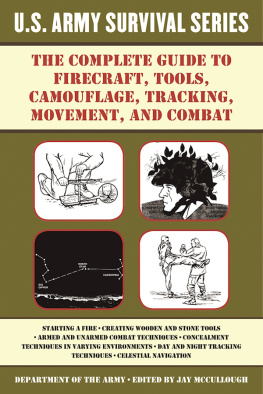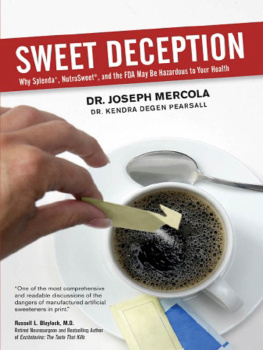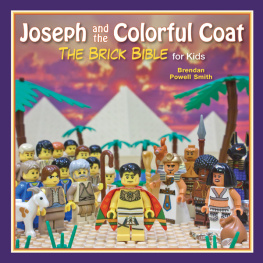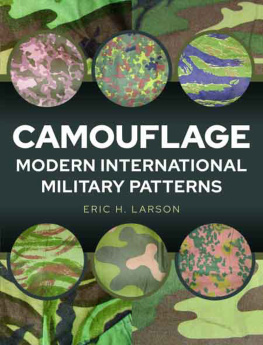
Mary Horlock worked as a curator at the Tate Gallery Liverpool and Tate Britain, and has written widely on contemporary art and artists. Her first novel, The Book of Lies , was longlisted for the Guardian First Book Award. She lives in London.
BY THE SAME AUTHOR
The Book of Lies
For Alice Maureen Barclay
Patron
Fiona Paice
With special thanks to
Darian Leader
Paddy Whitford
Dear Reader,
The book you are holding came about in a rather different way to most others. It was funded directly by readers through a new website: Unbound. Unbound is the creation of three writers. We started the company because we believed there had to be a better deal for both writers and readers. On the Unbound website, authors share the ideas for the books they want to write directly with readers. If enough of you support the book by pledging for it in advance, we produce a beautifully bound special subscribers edition and distribute a regular edition and e-book wherever books are sold, in shops and online.
This new way of publishing is actually a very old idea (Samuel Johnson funded his dictionary this way). Were just using the internet to build each writer a network of patrons. At the back of this book, youll find the names of all the people who made it happen.
Publishing in this way means readers are no longer just passive consumers of the books they buy, and authors are free to write the books they really want. They get a much fairer return too half the profits their books generate, rather than a tiny percentage of the cover price.
If youre not yet a subscriber, we hope that youll want to join our publishing revolution and have your name listed in one of our books in the future. To get you started, here is a 5 discount on your first pledge. Just visit unbound.com , make your pledge and type gray5 in the promo code box when you check out.
Thank you for your support,

Dan, Justin and John
Founders, Unbound
Contents
Preface
This story starts with a picture: a vast turquoise sky, an endless yellow beach, a mother and her child playing in the sand.
My grandmother lifts a trembling hand and points towards the smallest figure.
That is me.
She now has a room measuring nine feet by five. There isnt much wall space, so the picture hangs in the corridor outside, beside the sign: No. 18: Maureen Barclay.
Maureen Barclay is a widow and there are many here. Some dont know where they are, nor do they remember the lives they have lived. Maureen is different; she remembers plenty. But with this blessing comes a curse: the older she becomes, the more she worries what she might soon forget. She has moved into a nursing home quite by her own choice, but as she downsizes, reducing her life to the essentials, the more she is stripping back memories, the memories embedded in clothes, objects, papers and pictures.
There simply isnt room for them here.
The only solution is to pass them on to the people she trusts. She has given me many things over the years her love and time above all else and now she surrenders a most treasured possession. It is a pencil-drawn self-portrait of her father and my great-grandfather, Joseph Gray. This is the man who first painted that small child playing on the beach.
Joseph Gray is an artist most people have never heard of, but for much of my early life he was the only artist Id ever heard of. His paintings filled all the rooms of my grandparents flat and much of my own family home. Smoke-filled streets and blitzed churches lined our staircase, thickly painted still lifes crowded in corners, restless seas churned over each mantelpiece. While the houses of my friends contained candy-coloured Impressionist prints or tastefully anonymous landscapes, we had this curious mix of styles and subjects, all courtesy of an artist Id never even met.
But at least I knew what he looked like. I would stare for hours at this pencil-drawn self-portrait: darkly piercing eyes under hooded lids, a wide curving nose, a proud, rounded jaw. With a crumpled hat pulled low on his head, Joseph Gray stood straight and returned my gaze. Now thats what an artist should look like, I thought.
The first time I met Joe was through this drawing, and the first time I saw London was through his paintings of the Thames. I was told hed been a war artist and because of the prints on our staircase images of St Pauls ablaze, a city in ruins I assumed this meant the Second World War. I was wrong. Joe had fought in the trenches of the First World War and, once invalided out, had become an official war artist to The Graphic newspaper. He was later commissioned to paint battle scenes and portraits of fallen heroes, with his prints and drawings making their way into museums up and down the country.
Now, as Maureens life shrinks she has one cupboard to hang her clothes, one chest of drawers so mine must expand. On each visit she surrenders new memories. First she hands me a file of old art reviews from the 1920s (Mr. Gray has done wonders, Mr. Gray may be ranked with the great battle painters.).
I think again of the pencil self-portrait, dark eyes haunted by what hes seen.
It is a shame, Maureen tells me. Nobody knows about him now, nobody remembers him. He lived such a life, he did such extraordinary work.
I nod slowly, familiar with that lament, and reach over to give her hand a gentle squeeze. Despite the passing of the years there is something unresolved at her core, a sadness buried deep within. Maureen has lived a vivid life, created a large and loving family who adore her, but sometimes I catch a glimpse of the little girl on the beach, still looking for her father.
She refers to Joe often, as a war artist, a painter and etcher of note, and reminds us how successful he was once. That once was long ago, but it is what she clings to. She cannot really grasp the rest; why she never saw him after, where he went and what he did.
There was, of course, another war.
She uses her long ebony stick to prod at an ominous file abandoned at her feet.
To serve in two world wars. Its hard to understand. Can you take this, please. Im sure youll find a use for it.
I lean casually to pick up the file but am instantly defeated. It spews yellow papers and is as heavy as a brick. It bears the cryptic label: Steel Wool: Camouflage.
Camouflage, I repeat, as if it is a question.
Joseph Gray was a good artist. My grandmother maintains that with a little more luck he might have been great. She is frustrated by the injustice of it all, by his failure to find a proper context. She has a point. After risking his life in one war Joe shouldnt have had to struggle through the next decade, fighting to get his paintings seen.
But just because something cant be seen doesnt mean it isnt there. For the uninitiated, the word camouflage can be traced to seventeenth-century France: camouflet was a slang word that meant a puff of smoke blown into someones face to dupe them. This makes it sound so simple, but camouflage is never just a matter of concealment; it is fundamentally about deception. You must fool someone with a surface resemblance, make them think they understand what they see, yet what they see is a lie.
All the facts sit in this heavy file, crammed full of reports and memorandums, photographs and drawings. Im not sure how much of it Maureen has actually read, but I kiss her goodbye and take it away, struggling down the stairs that only the care-home staff ever use. I pass a few elderly residents slumbering in their comfy chairs. One pale, hairless gentleman repeatedly wipes at an invisible smudge on the table in front of him. I think of the stories lost, or so well hidden they will never be told.
Next page
